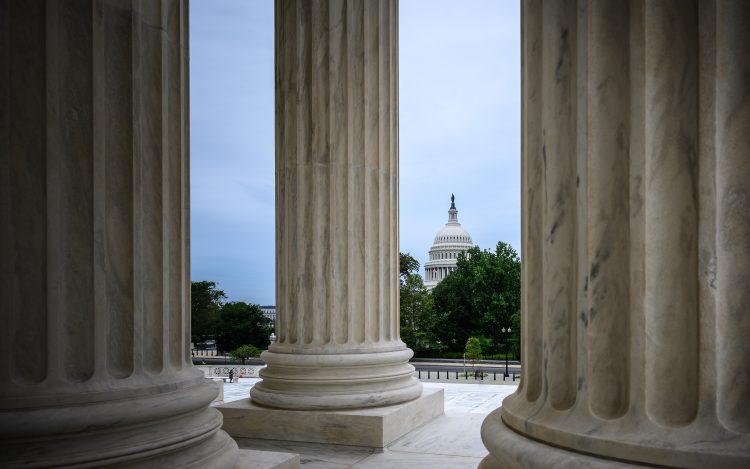This week on Facing the Future we discussed the interaction of fiscal and monetary policy with Dr. Thomas Hoenig, former President of the Federal Reserve Bank of Kansas City and a member of the Federal Reserve System’s Open Market Committee (FOMC) from 1991 to 2011. We got his take on the Fed’s efforts to engineer a soft landing and the implications of high debt for the nation’s long-term budget and economic outlook. Concord Coalition chief economist Steve Robinson joined the conversation.
Despite progress in lowering inflation, Hoenig is not ready to say that a soft landing has been achieved. “We have avoided a recession to this point, and that’s something we all want. And so in that sense, we’ve been fortunate. Now, have we achieved the soft landing? No, if the soft landing means that you get inflation down to 2 percent and you keep unemployment low, and the outlook for that is kind of a steady state. We’re still not quite there. The Consumer Price Index (CPI) is running between 2.5 and 3 percent or better, with core CPI being above 3 percent and CPI being closer to 2.5 percent. So, I think the Fed is still on a glide path. Hopefully, they’ll be able to keep it up until inflation is down to 2 percent on a sustainable basis, but that verdict is still out.”
Hoenig said the Fed’s 50 basis point rate cut in September “wasn’t entirely a shock, but it was a bit of a surprise because the economy was running at 3 percent in the second quarter and the 3rd quarter was looking strong even then. And I think the 4th quarter now is starting off fairly well. So whether there was a need for a 50 basis point cut, or it served a good purpose is out for debate. I would personally have preferred a 25 basis point cut if there was going to be a cut, and I could argue that there should not have been a cut at all given the strength of the economy.”
While it may strike some as counterintuitive, market rates on longer-term U.S. securities have gone up a bit since the Fed’s big rate cut. In Hoenig’s view, “people are looking at the world as it is, and they still see inflation above the target. They see action being taken that would make it more difficult to attain the 2 percent target. They’re looking at the strength of the economy and they’re saying, ‘Wait a minute. This may be the seventies, after all,’ where you had a temporary reduction in inflation. So you lower interest rates, inflation comes back, and you have to raise rates again. Do they really have this soft landing made, or are they still in the glide path, and may find themselves unable to land and having to take off again, or seeing it take off again. And I think you see it in the fact that longer term rates have not come down. They’ve actually gone up slightly. You see it in the price of gold that continues to rise in this situation, which is an inflation hedge for many people, so the market and the public are saying we really want to see inflation coming down. But we’re not sure we’re going to see it now, given these more recent actions and given the strength that we see in the economy.”
The growing debt has long been a concern for Hoenig, going back to his days at the Fed. “It’s unfortunate that this is not an issue in the campaign, because it is a big issue,” Hoenig said. The debt “is not sustainable, and no one is talking about it.”
Hear more on Facing the Future. Concord Coalition Executive Director Bob Bixby hosts the program each week on WKXL in Concord N.H., and it is also available via podcast. Join us as The Concord Coalition team discusses issues relating to national fiscal policy with budget experts, industry leaders, and elected officials. Past broadcasts are available here. You can subscribe to the podcast on Spotify, Pandora, iTunes, Google Podcasts, Stitcher, or with an RSS feed. Follow Facing the Future on Facebook, and watch videos from past episodes on The Concord Coalition YouTube channel.
Continue Reading










